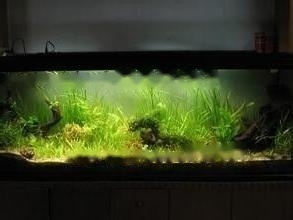
For fish to grow healthily, be sure to regularly remove excess algae from the tank or control the growth of algae. Too much algae will make the water turbid and cause carbon dioxide to rise, so that the fish will die due to lack of oxygen. For the cleaning of different algae, different methods should also be used, such as regular water change, stabilizing the pH value of the water, etc. Follow your pet editor to learn through the following articles!
1. Reasons for the appearance of algae in fish tanks
1. Excessive nutrients
When nutrients, Nitrogen, phosphorus and organic carbon are in excess, and these substances exceed the self-purification capacity of the water body and filtration system, creating an extremely favorable environment for algae growth.
2. Sufficient light exposure
Especially in the case of sufficient and reasonable light, algae will reproduce and grow more vigorously and frequently. The most common algal organisms in fish tanks are green water, membrane algae, filamentous algae, moss, black hair algae, diatoms and so on.
3. Nitrates in the water
Green water baths are mainly caused by the accumulation of excessive nitrates and phosphates in the water, resulting in the rapid growth and reproduction of water baths.
4. Caused by frequent water changes
Membranous algae often appear in new tanks or in aquariums with frequent water changes. It will inhibit the photosynthesis and respiration of aquatic plants and make aquatic plants. Poor growth. Moss can grow in unoptimized to highly optimized water quality.
2. Methods for controlling the growth of algae
1. Remove dead algae
Algae can multiply and grow rapidly in water, and algae will consume carbon dioxide dissolved in water, resulting in The PH value in the water quality environment rises rapidly, and a large number of dead algae will consume a large amount of oxygen in the water environment of the fish tank, which will also damage the water quality environment of the fish tank and affect the growth of aquarium organisms.
2. Stabilize the pH value of water
When a large number of algae appear in the fish tank, farmers can adjust the hardness of the water, adjust the water temperature, stabilize the pH of the pool water, etc. to inhibit the algae. grow.
3. Proper use of algaecide
Algae reproduction can be effectively inhibited when there is sufficient residual chlorine in the water. At the same time, you can choose a special algaecide crystal copper sulfate, let it dissolve in water, and wait for the water to turn blue. This professional agent is very soluble in water, and the effect of algae removal is very good.
4. Change the water to clean the fish tank
When a large number of algae are found in the fish tank, it is necessary for aquarists to replace the fish tank with new water, and clean the fish tank to remove the algae on the fish tank wall. Life is cleaned up, and this method is used to remove water weeds.
5. Regular cleaning
In the daily breeding process, it is necessary to regularly clean the water quality. It is necessary to regularly remove algae to reduce the occurrence of a large number of fish tanks. The chance of algal blooms.
3. Different algae cleaning methods
1. Moss
Green membrane-like algae that mainly grow on the surface of aquarium glass or rocks in aquarium. This moss can be removed using fish like elf, black-line flying fox, and white jade flying fox.
2. Black hair algae
Most of them grow on the margins of aquatic plants. When it is found that such algae are breeding in the fish tank, you should immediately use scissors to cut off the leaves of the growing algae to remove it as completely as possible from the aquarium or use a professional algaecide to remove it.
3. Membranous algae
Grows on the surface of aquatic plants, stones, tank walls or bottom sand. For disposal, the filamentous algae can be removed or removed manually by hand or with a suitable tool. It is recommended not to add too much fertilizer, it is a safe practice.
4. Filamentous algae
The algae mainly grow on the leaves and stones of aquatic plants. When removing, the filamentous algae can be removed by hand or with appropriate tools or stocked with algae. predators for removal.
![[Dog Training 5] The training method of pet dog dining etiquette](/static/img/12192/12192_1.jpg)




